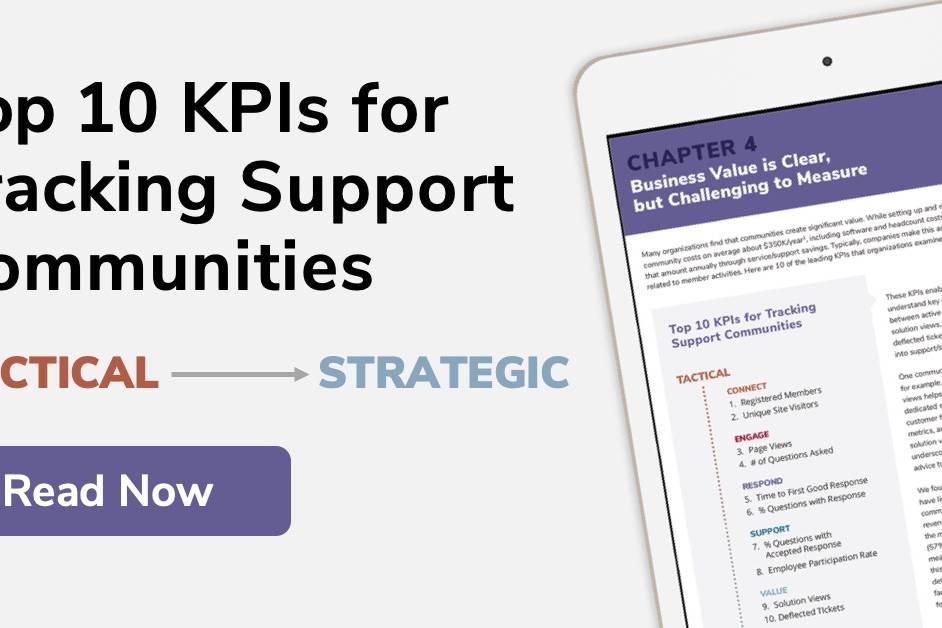 Online communities are not a new phenomenon, but they are now capturing the hearts and minds of social media users around the globe. There seems to be an online community for every walk of life or group. But the underlying operations of a given community can vary drastically, depending on whether it is consumer-focused or a business-to-business community. If you are building or running an online community, or a member of one or more, it is important to understand the differences to maximize the value of your online home. Some organizations do not realize there are a variety of different online community models to explore – each with its own set of benefits and challenges. Below is a brief overview of the different types of community models:
Online communities are not a new phenomenon, but they are now capturing the hearts and minds of social media users around the globe. There seems to be an online community for every walk of life or group. But the underlying operations of a given community can vary drastically, depending on whether it is consumer-focused or a business-to-business community. If you are building or running an online community, or a member of one or more, it is important to understand the differences to maximize the value of your online home. Some organizations do not realize there are a variety of different online community models to explore – each with its own set of benefits and challenges. Below is a brief overview of the different types of community models:
To better explain these models, my esteemed colleague Blaise Grimes-Viort, Vice President of Community at e-moderation, and I have formed a thinking partnership – Blaise tackled the B2C commentary and I focused on B2B naturally! Together we have spent some time e-chatting about what organizations need to know to succeed in their online community-building endeavors.
How do you define a Business to Consumer (B2C) Community?
B2C online communities are brand-to-consumer and consumer-to-consumer focused networks, providing a platform for engagement with the brand, or support amongst customers in using the brands’ products and other points of interest for the brands’ customers. The vast majority of online communities fall under this banner, from simple broadcast Twitter brand accounts interacting with customers, to large customer service forums supporting discussion around the use of products. Some communities can also be focused on lifestyle or topical discussions not directly related to a brand’s products, but for which the brand benefits from brand exposure in maintaining the community. B2C communities tend to be open experiences, and in the case of campaign communities, highly focused on a particular activity strongly related to the use of a brand’s product range.
How do you define a Business to Business (B2B) Community?
B2B online communities are professional networks that contain a blend of content and collaboration opportunities around a shared business-based experience. They are commonly established between a business and its business customers (e.g. Cisco and Cisco customers), professional associations (e.g. the Institute of Food Technologists) or like-minded professionals (e.g. Palladium Group Execution Premium Community for strategy practitioners within larger organizations.) Many examples of B2B communities are not visible to the public because serve a specific, qualified audience and offer a private, gated experience for members. B2B communities tend to be smaller than their B2C counterparts, anywhere from a hundred members upward, but rarely into the millions of users found on some B2C communities.
Why are B2C online communities formed? What is their purpose?
B2C communities are predominantly formed to provide a platform for a brand to promote their products. This can be done transparently via broadcast or campaign activities such as competitions or by extension in order to increase their brand visibility and share of voice through co-branding of lifestyle or customer service communities.
In the first instance, their purpose is generally to encourage a direct communication between the brand and the customer, either through broadcasting messages to elicit responses, or monitoring mentions of products and engaging directly with the customer.
In the second instance, their purpose is more focused on providing a platform for customers to interact amongst themselves, whether to achieve a goal, improve a skill or facilitate better use of the brand’s products. This model also allows the brand to collate a large data set on their customers for future mining.
Membership in both cases tend to be fleeting, with a brief period of collaboration followed by passive observance of other’s activity or complete withdrawal from the community until the next need for engagement.
Why are B2B communities formed? What is their purpose?
The purpose of a B2B community is driven by a topic focus or strong connections between members and the community’s sponsor. Companies often build online communities to bring clients and prospects together in a private space where they can discuss the business at hand.
Unlike the “collaborate and evaporate” model often found in B2C communities, members of a B2B community often develop long-term working relationships and ongoing collaboration activities. Many B2B communities have a vertical focus, with members from the same industry, specialty or job role. Often they already know each other through prior face-to-face encounters and are therefore more likely to share information and provide peer-peer support among fellow colleagues.
Are there differences in facilitating and managing the different community types?
Because of the focused nature of B2B communities, they are often more “high-touch” than B2C communities. In B2B communities, where the goal is to better understand customer or partner needs from a product or service offering, the value of the community resides in detailed exchanges between members, and between members and the firm. These exchanges inform departments such as R&D and product development with better data on which to base product updates, new service lines or even new business initiatives to meet customer needs.
The professional focus of B2B communities means members are much less likely to behave inappropriately than in a wide-open, public community of anonymous users. Most contributions to a B2B community — such as message posts and content contributions like blog entries or paper submissions — can go live on the site instantly.
The social design of a B2B community requires the facilitator to be skilled at crafting social dynamics that offer protection from exposure for members – professionals are (generally) better at solving problems for others than asking for help. Cultivating a give-and-take relationship around sharing knowledge is a necessary activity through outreach and respectful but persistent engagement tactics.
On the other hand B2C communities can also focus on R&D and product development, so similar techniques can be utilized. However in terms of the more common communities of interest or circumstance, as participants are more often than not anonymous so contributions require a higher level of oversight. Whilst great scale of activity will dictate the application of reactive moderation, on smaller communities post or even pre moderation will need to be applied until the community can self-police to a standard the brand is comfortable with.
Given the greater transience of the membership in B2C communities, the facilitator will be aiming to both increase the number of contributions which encourage responses, as well as trying to build a web of relationship between groups of participants to increase repeat visits. The challenge over time is then to ensure that cliques don’t form and affect the appeal to new members.
What are the audience acquisition models for B2C and B2B communities?
They are fundamentally different. The B2C community is defined by size and scale of audience whereas the B2B community is defined by audience segmentation. This difference has a direct impact on many of the decisions made about the community through its strategy and operational plans. B2C communities are usually built through advertising, WOM, and SEO, often through a spray and pray approach designed to “hoover up” as many members as possible to broaden brand reach. More targeted initiatives can be deployed such as developing customer research communities, or utilizing blogger/influencer outreach programs to reach specific demographics. Exponential growth is aimed for in the infamous “hockey stick” pattern.
In contrast, direct invitations and peer referral are responsible for much of a B2B community’s audience development. Because a B2B community’s membership may be vetted or based on specific selection criteria, it is essential that audience acquisition be measured and protected. In fact, in successful gated B2B online communities, many prospective members are not allowed into the community because they do not meet the selection or affiliation requirements. Because B2B communities rely heavily on consolidating a likeminded, segmented audience, creating a well rounded understanding of who you want to attract or invite into your community is a critical success factor.
Do B2B and B2C online communities require a different editorial or content plan?
Whether it is a B2B or B2C online community, it is no secret that members come for content and stay for community. However, the nature and tenor of the content that succeeds in each kind of community varies widely. While seemingly counter-intuitive, B2B communities require less information to be displayed on the site.
Effective B2B communities need to offer a managed selection of interactions and information for members. Each piece of content or interaction needs to be present for a reason. Even user generated content (UGC) is well served by putting it through a voluntary (user option) editing process to help a member’s writing be as powerful as possible.
B2C communities on the other hand are often best served with a larger volume of content. This could either be long-tail content such as informational articles or how-to guides, or disposable topical content designed to engage in the moment. Often, the most successful broadcast content is that which succeeds in riding meme waves early enough in the virility curve, thus achieving both reach and brand recognition as the meme progresses. Successful on-site content is usually SEO friendly guides written by the community, or articles written by the Community Manager focusing on community interests or topics in need of new community participants.
What always holds true, however, is that well-written, clearly targeted content will succeed, regardless of whether you’re talking to a B2B or a B2C audience. And while the approaches of B2B and B2C communities may vary, brands operating in both sectors can learn some tips and tricks from their counterparts.
Warning: Attempt to read property "base" on array in /home3/trusten9/public_html/leadernetworks/wp-content/plugins/wp-user-profile-avatar/shortcodes/wp-user-profile-avatar-shortcodes.php on line 665
Warning: Attempt to read property "base" on array in /home3/trusten9/public_html/leadernetworks/wp-content/plugins/wp-user-profile-avatar/shortcodes/wp-user-profile-avatar-shortcodes.php on line 665
Warning: Attempt to read property "base" on array in /home3/trusten9/public_html/leadernetworks/wp-content/plugins/wp-user-profile-avatar/shortcodes/wp-user-profile-avatar-shortcodes.php on line 665
Warning: Attempt to read property "base" on array in /home3/trusten9/public_html/leadernetworks/wp-content/plugins/wp-user-profile-avatar/shortcodes/wp-user-profile-avatar-shortcodes.php on line 665
Vanessa DiMauro
Internationally recognized independent thought leader on social business strategy and operations with a specialty in online community. I help organizations drive top line growth through innovative digital strategy design and thoughtful execution. I have successfully led 60+ strategic social business initiatives for the world's most influential organizations over my 20 years as a social business executive and serve on a number of boards. My award-winning track-record is fueled by passion, experience and research.
My work has been covered by leading publications such as the New York Times, the Wall Street Journal and CIO Magazine and was recently named a Social Marketing Master by Forbes. As a former Executive in Residence at Babson College, Olin School of Management, I am an engaging and informational educator and keynote speaker.
9 Comments
Add comment Cancel reply
This site uses Akismet to reduce spam. Learn how your comment data is processed.




[…] Original Article on Leader Networks > […]
[…] B2B versus B2C: An Online Community Taxonomy – Leader Networks […]
[…] See original article at leadernetworks.com […]
[…] Online communities are not a new phenomenon, but they are now capturing the hearts and minds of social media users around the globe. […]
[…] this example from Social Media Today, top online community consultant, Vanessa DiMauro, assumes that this article’s readers think of an online community in this […]
Recommeneded websites…
Here are some belonging to the online sites we encourage for our readers…
[…] Vanessa DiMauro defines B2B communities as “professional networks that contain a blend of content and collaboration opportunities around a shared business-based experience.” […]
[…] this example from Social Media Today, top online community consultant, Vanessa DiMauro, assumes that this article’s readers think of an online community in this […]
[…] this example from Social Media Today, top online community consultant, Vanessa DiMauro, assumes that this article’s readers think of an online community in this […]